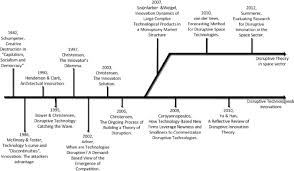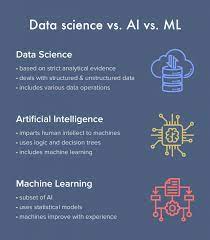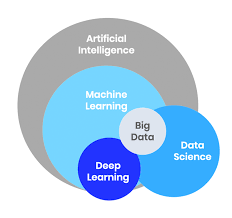The Impact of Disruptive Technology on Business and Society
Disruptive technology is a term that has gained prominence in recent years as advancements in technology continue to reshape industries and societies at an unprecedented pace. Disruptive technologies are innovations that significantly alter the way businesses operate, often leading to the creation of entirely new markets or the disruption of existing ones.
One of the key characteristics of disruptive technology is its ability to challenge traditional business models and practices. Companies that fail to adapt to these technological changes risk being left behind as more agile and innovative competitors seize opportunities created by disruptive technologies.
Disruptive technologies can have a profound impact on various sectors, from transportation and healthcare to finance and education. For example, the rise of ride-sharing services like Uber has transformed the transportation industry, challenging traditional taxi services and revolutionising how people commute.
Similarly, advancements in artificial intelligence (AI) and automation are reshaping the workforce, with tasks once performed by humans now being automated by machines. While this can lead to increased efficiency and productivity, it also raises concerns about job displacement and the need for upskilling in a rapidly changing labour market.
Despite the challenges posed by disruptive technology, it also presents numerous opportunities for growth and innovation. Businesses that embrace these technological changes can gain a competitive edge, reach new markets, and improve customer experiences through personalised services and solutions.
Furthermore, disruptive technologies have the potential to address pressing societal issues such as climate change, healthcare accessibility, and education equity. For instance, renewable energy technologies are disrupting traditional energy sources and paving the way for a more sustainable future.
In conclusion, disruptive technology is not just about creating new products or services; it is about fundamentally transforming how we live, work, and interact with the world around us. Embracing these technological disruptions is essential for businesses and society to thrive in an increasingly digital age.
Understanding Disruptive Technology: Key Questions and Insights for Businesses and Individuals
- What is disruptive technology?
- How does disruptive technology impact businesses?
- What are examples of disruptive technologies in today’s world?
- What are the benefits of embracing disruptive technology?
- What challenges do businesses face when adopting disruptive technology?
- How can individuals prepare for the impact of disruptive technology on the workforce?
- Is it necessary for all businesses to adopt disruptive technology to stay competitive?
- What ethical considerations should be taken into account when implementing disruptive technologies?
What is disruptive technology?
Disruptive technology refers to innovations that significantly alter the way industries operate, often by creating new markets or disrupting existing ones. These technologies introduce novel approaches that challenge traditional business models and practices, forcing companies to adapt or risk becoming obsolete. Examples of disruptive technologies include artificial intelligence, blockchain, and the Internet of Things, which have revolutionised various sectors by offering new solutions and opportunities for growth. Embracing disruptive technology is crucial for businesses looking to stay competitive in an ever-evolving digital landscape.
How does disruptive technology impact businesses?
Disruptive technology has a profound impact on businesses, reshaping industries and challenging traditional business models. Companies that fail to adapt to these technological changes risk being left behind by more agile and innovative competitors who seize the opportunities created by disruptive technologies. From transforming customer experiences to improving operational efficiency, disruptive technology can revolutionise how businesses operate, create new markets, and drive innovation. Embracing disruptive technology allows businesses to stay competitive, reach new audiences, and remain relevant in an ever-evolving digital landscape.
What are examples of disruptive technologies in today’s world?
In today’s rapidly evolving technological landscape, there are several examples of disruptive technologies that are reshaping industries and societies. One prominent example is blockchain technology, which has the potential to revolutionise sectors such as finance, supply chain management, and healthcare by enabling secure and transparent transactions without the need for intermediaries. Another example is 3D printing, which is disrupting traditional manufacturing processes by allowing for the rapid prototyping and production of customised products at a lower cost. Additionally, the Internet of Things (IoT) is transforming how devices communicate and interact with each other, leading to increased efficiency and connectivity in various domains. These disruptive technologies are just a few examples of the innovative advancements that are driving change and creating new opportunities in today’s world.
What are the benefits of embracing disruptive technology?
Embracing disruptive technology offers a myriad of benefits for businesses and society. By adopting innovative technologies, organisations can gain a competitive edge, increase operational efficiency, and drive growth through new market opportunities. Disruptive technology enables companies to streamline processes, reduce costs, and enhance productivity, ultimately leading to improved customer experiences and satisfaction. Furthermore, embracing disruptive technology fosters a culture of innovation and adaptability within an organisation, positioning it at the forefront of technological advancements and future-proofing its operations in an ever-evolving digital landscape.
What challenges do businesses face when adopting disruptive technology?
Businesses face several challenges when adopting disruptive technology. One significant challenge is the need to overhaul existing processes and systems to accommodate the new technology, which can be time-consuming and costly. Additionally, there may be resistance from employees who are accustomed to traditional ways of working, requiring comprehensive training and change management efforts. Another challenge is the rapid pace of technological advancements, making it challenging for businesses to stay ahead of the curve and continuously adapt to new innovations. Furthermore, there may be regulatory hurdles and security concerns associated with implementing disruptive technology, requiring careful planning and compliance measures to mitigate risks effectively.
How can individuals prepare for the impact of disruptive technology on the workforce?
In anticipation of the impact of disruptive technology on the workforce, individuals can take proactive steps to prepare themselves for the changes ahead. Continuous learning and upskilling in emerging technologies such as artificial intelligence, data analytics, and automation can enhance one’s employability and adaptability in a rapidly evolving job market. Building a diverse skill set that includes both technical and soft skills can help individuals remain competitive and resilient amidst technological disruptions. Additionally, cultivating a growth mindset, staying informed about industry trends, and networking with professionals in related fields can provide valuable insights and opportunities for navigating the transformative effects of disruptive technology on the workforce.
Is it necessary for all businesses to adopt disruptive technology to stay competitive?
In today’s rapidly evolving business landscape, the question of whether all businesses must adopt disruptive technology to remain competitive is a crucial one. While embracing disruptive technology can certainly provide a significant advantage in terms of efficiency, innovation, and market relevance, it may not be a one-size-fits-all solution for every business. The decision to adopt disruptive technology should be based on a thorough evaluation of the specific industry, market dynamics, and organisational goals. For some businesses, gradual integration of innovative technologies may be more suitable, while others may need to fully embrace disruptive technology to stay ahead in highly competitive markets. Ultimately, the key lies in understanding the unique needs and challenges of each business and strategically leveraging disruptive technology where it can create the most value and impact.
What ethical considerations should be taken into account when implementing disruptive technologies?
When implementing disruptive technologies, ethical considerations are paramount to ensure that these innovations benefit society as a whole. Privacy is a significant concern, as many disruptive technologies, such as AI and big data, involve the collection and analysis of vast amounts of personal information. Ensuring that data is handled responsibly and securely is crucial to protect individuals’ rights. Additionally, the potential for job displacement due to automation necessitates consideration of how to support affected workers through retraining and education programmes. There is also the issue of bias in technology, particularly in AI systems, which can perpetuate existing inequalities if not addressed. Furthermore, transparency in how technologies are developed and used is essential to build public trust. Overall, a careful balance must be struck between innovation and ethical responsibility to ensure that disruptive technologies contribute positively to society.






